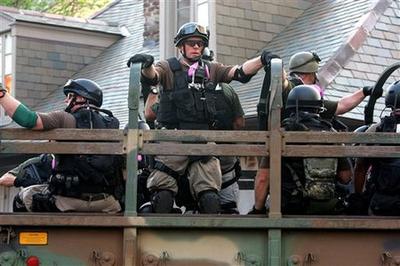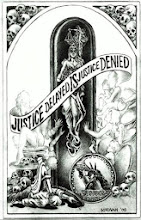 Where have all the bodies gone??
Where have all the bodies gone??Though half of New Orleans remains flooded and teams are still working to recover the dead, there are signs that hopelessness is beginning to lift two weeks after Hurricane Katrina plowed ashore.
Burnt-orange rubble from terra-cotta tiles, wrenched from roofs and scattered about the French Quarter, wait in neat piles for collection along the curb. Bourbon Street is cleaner than it ever is during Mardi Gras. And Donald Jones, a 57-year-old lifelong resident, is no longer armed when walking his street.
"The first five days I never went out of my house without my gun, now I don't carry it," Jones said, starting to laugh. "The only people I meet is military."
"Each day there's a little bit of an improvement," Coast Guard Vice Adm. Thad W. Allen, commander of the New Orleans relief efforts, told NBC News on Sunday night. "And in the end run, maybe a week, two weeks from now, someone's going to wake in the morning and have something they didn't have the day before, and that's hope."
President Bush will get his first up-close look at the destruction in New Orleans on Monday. He spent the night aboard the USS Iwo Jima, an amphibious assault ship anchored in the Mississippi River in front of the convention center, where thousands of people waited in squalor for days before being rescued.
Bush also planned to tour the devastated town of Gulfport, Miss.
The waters in New Orleans, which once covered 80 percent of the city, have pulled back far enough to allow for a scenic drive down Esplanade Avenue, past the handsome, columned two-story home where French painter Edgar Degas once lived to the New Orleans Museum of Art in City Park.
The same can be said for Saint Charles Avenue. While many homes are deserted and the old green street cars are gone, the beauty of the Greek Revival and Victorian homes, fronted by a canopy of live oaks, overwhelms the sight of debris piled along the roadway.
"I think it's livable," said John Lopez, who moved to New Orleans from the New York City area about a year ago. "If they got running water to all these buildings that are obviously inhabitable, they could get the city cleaned up a lot faster because people would be cleaning up their own blocks and their own neighborhoods."
Lopez and others are among those in the city who survived the hurricane at home, refused the subsequent order to leave and have started to clean up their neighborhoods. While they are worried about authorities forcing them to evacuate, there so far have been no reports that's happened in New Orleans.
Starting Monday, businesses owners in the central commercial district will be able to get temporary passes into the city so they can retrieve vital records or equipment needed to pay employees or otherwise run their companies, said state police spokesman Johnny Brown.
While there were clear signs of progress, flood waters do remain in large areas of the city. And even those areas that finally dried out over the weekend were covered in a brown film emitting nauseating fumes, with little left to salvage.
Authorities raised Louisiana's death toll to 197 on Sunday, and recovery of corpses continued. Teams pulled an unspecified number of bodies from Memorial Medical Center, a 317-bed hospital in uptown New Orleans that closed more than a week ago after being surrounded by floodwaters.
Elsewhere, there were nuggets of encouraging news:
- Louis Armstrong New Orleans International Airport reopened for cargo traffic Sunday, and planned to open to limited passenger service starting Tuesday.
- The city's main wastewater treatment facility will be running by Monday, said Sgt. John Zeller, an engineer with the California National Guard.
- Army Lt. Gen. Russel L. Honore, commander of active duty troops engaged in hurricane relief, reiterated Sunday the number of dead would be "a heck of a lot lower" than initial projections of 10,000 or more.
And residents of New Orleans were trying to re-establish pieces of the city's inimitable character. Some even found things to laugh about.
Barbara Hoover, who lives in the Faubourg-Marigny neighborhood just down river from the French Quarter, said the military's ready-to-eat meals are "just as good, if not better, than the South Beach Diet. They're amazing."
Yet, the mainstream media is STILL trying to pin all this on George W. Bush. Luckily, the American electorate isn't buying the mantra currently burning up fax machines all over the journalistic world.
God Bless,
Dan'L


0 Comments:
Post a Comment
<< Home